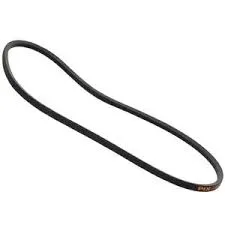- Arabic
- French
- Russian
- Spanish
- Portuguese
- Turkish
- Armenian
- English
- Albanian
- Amharic
- Azerbaijani
- Basque
- Belarusian
- Bengali
- Bosnian
- Bulgarian
- Catalan
- Cebuano
- Corsican
- Croatian
- Czech
- Danish
- Dutch
- Afrikaans
- Esperanto
- Estonian
- Finnish
- Frisian
- Galician
- Georgian
- German
- Greek
- Gujarati
- Haitian Creole
- hausa
- hawaiian
- Hebrew
- Hindi
- Miao
- Hungarian
- Icelandic
- igbo
- Indonesian
- irish
- Italian
- Japanese
- Javanese
- Kannada
- kazakh
- Khmer
- Rwandese
- Korean
- Kurdish
- Kyrgyz
- Lao
- Latin
- Latvian
- Lithuanian
- Luxembourgish
- Macedonian
- Malgashi
- Malay
- Malayalam
- Maltese
- Maori
- Marathi
- Mongolian
- Myanmar
- Nepali
- Norwegian
- Norwegian
- Occitan
- Pashto
- Persian
- Polish
- Punjabi
- Romanian
- Samoan
- Scottish Gaelic
- Serbian
- Sesotho
- Shona
- Sindhi
- Sinhala
- Slovak
- Slovenian
- Somali
- Sundanese
- Swahili
- Swedish
- Tagalog
- Tajik
- Tamil
- Tatar
- Telugu
- Thai
- Turkmen
- Ukrainian
- Urdu
- Uighur
- Uzbek
- Vietnamese
- Welsh
- Bantu
- Yiddish
- Yoruba
- Zulu
Oct . 10, 2024 11:52 Back to list
flat leather drive belt
The Versatility of Flat Leather Drive Belts
Flat leather drive belts have been an essential component in the machinery and engineering sectors for many years. These belts serve a crucial role in transferring power efficiently between pulleys and shafts, providing a reliable link that drives various mechanical systems. Their unique properties, coupled with a simple design, have made them a favored choice across numerous industries, from textile manufacturing to woodworking.
Material and Design
Flat leather drive belts are typically made from high-quality leather, which possesses excellent tensile strength and flexibility. The leather is often treated with oils or waxes to enhance its durability and resistance to wear. This treatment allows the belts to withstand the friction and tension generated during operation, ensuring a long lifespan. The flat design, which is sometimes referred to as a flat belt, provides a larger surface area in contact with the pulley, enabling efficient power transmission with minimal slippage.
The manufacturing process of these belts involves cutting leather sheets into uniform strips, which are then layered and glued together for increased strength. The belts can vary in thickness and width depending on their intended application, allowing manufacturers to tailor them to specific machinery requirements. This modularity makes flat leather drive belts a versatile choice for various mechanical systems.
Applications
Flat leather drive belts are widely used in several applications. In the textile industry, for instance, they are commonly employed in looms and spinning machines. Their ability to transmit power smoothly helps maintain the precision of these complex operations, ensuring that fabric production is both efficient and consistent.
flat leather drive belt

In woodworking, flat leather belts are often found in band saws, lathes, and other machinery where power transmission is essential. These belts facilitate the smooth operation of saw blades and other cutting tools, allowing woodworkers to achieve precise cuts with ease. The elasticity of leather also helps absorb shocks and vibrations, protecting the machinery and extending its life.
Furthermore, flat leather drive belts are not limited to industrial uses. They can also be found in vintage machinery and classic automobiles, where they contribute to the authenticity and functionality of historical equipment. Enthusiasts of vintage machinery often seek out flat leather belts to restore and maintain their equipment, showcasing the enduring appeal of this traditional component.
Advantages Over Other Materials
One of the significant advantages of flat leather drive belts over synthetic alternatives is their ability to handle heat and moisture. Leather naturally absorbs and releases moisture, which can be beneficial in environments where humidity levels fluctuate. This property helps prevent stretching and warping, ensuring that the belt maintains its shape and performance over time.
Additionally, leather belts can be repaired and reconditioned, adding to their longevity. Unlike synthetic belts, which may need to be replaced entirely at the first sign of wear, flat leather belts can often be stitched or glued back together, making them more sustainable and cost-effective in the long run.
Conclusion
Flat leather drive belts are a testament to the enduring value of traditional materials in modern engineering. Their unique properties, versatility in application, and ability to improve the efficiency of machinery make them an invaluable resource across multiple industries. As technology continues to evolve, the importance of reliable and efficient power transmission methods remains, ensuring that flat leather drive belts will continue to play a crucial role in mechanical systems for years to come. Whether in heavy industry or vintage machinery, these belts symbolize a blend of craftsmanship and functionality, making them a timeless choice in mechanical engineering.
-
Korean Auto Parts Timing Belt 24312-37500 For Hyundai/Kia
NewsMar.07,2025
-
7PK2300 90916-T2024 RIBBED BELT POLY V BELT PK BELT
NewsMar.07,2025
-
Chinese Auto Belt Factory 310-2M-22 For BMW/Mercedes-Benz
NewsMar.07,2025
-
Chinese Auto Belt Factory 310-2M-22 For BMW/Mercedes-Benz
NewsMar.07,2025
-
90916-02660 PK Belt 6PK1680 For Toyota
NewsMar.07,2025
-
drive belt serpentine belt
NewsMar.07,2025

